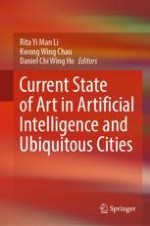2022 | OriginalPaper | Chapter
8. AI Object Detection, Holographic Hybrid Reality and Haemodynamic Response to Construction Site Safety Risks
Authors : Rita Yi Man Li, Kwong Wing Chau, Daniel Chi wing Ho
Published in: Current State of Art in Artificial Intelligence and Ubiquitous Cities
Publisher: Springer Nature Singapore
Activate our intelligent search to find suitable subject content or patents.
Select sections of text to find matching patents with Artificial Intelligence. powered by
Select sections of text to find additional relevant content using AI-assisted search. powered by
